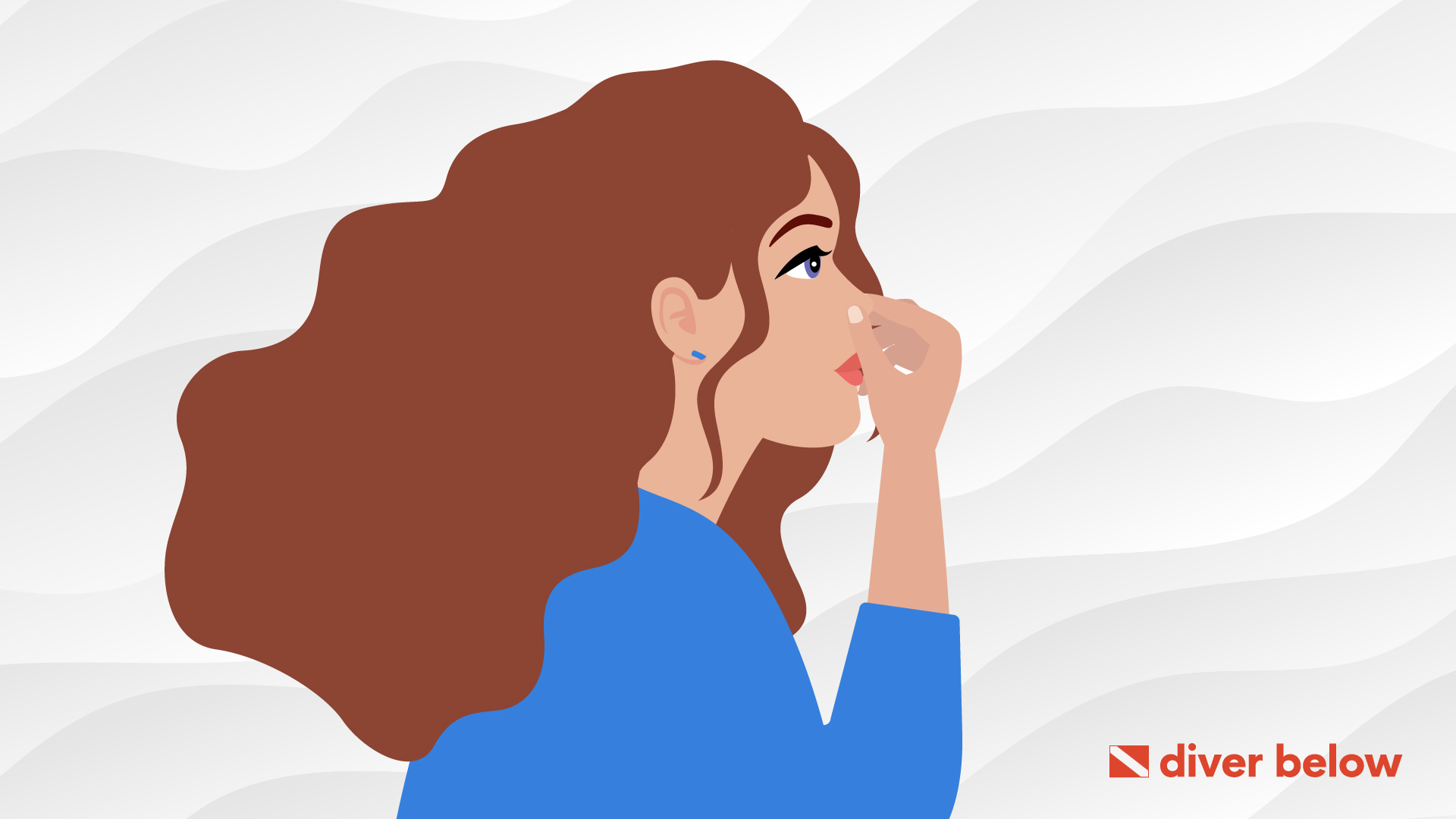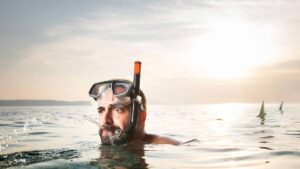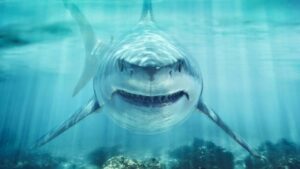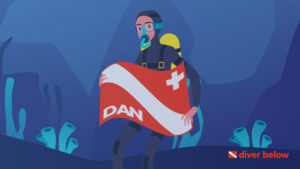We’ve all been there when the pressure suddenly builds in our ears and sounds like a bowl of Rice Krispies crackling.
It’s uncomfortable, kind of annoying, sometimes painful.
We feel we have entered a tunnel and our hearing isn’t as acute as we’re used to.
We don’t enjoy that rushing sound in our blocked ears.
Someone—please make it stop.
That’s where the skill of how to pop your ears comes into play.
Our finger instantly goes to that triangular piece of cartilage on our outer ear called the tragus and wiggle it hoping to pop the air pressure.
We instinctively hinge our mouths open.
Let’s face it, in every day settings, we take our ears for granted.
Most of us don’t even know the parts of our ears, like tragus, which you shouldn’t confuse with the Tagus, a river in Portugal.
Once in a while we stick a cotton swab into the ear canal though we know we shouldn’t.
Then again, it’s hard to get an entire elbow into tight spaces.
Let’s dig deeper into parts unknown and figure out our ear anatomy and what, why, when, and how to alleviate this annoying feeling of air or fluid build-up with a special focus on pressure equalization tips for scuba divers.
Contents
- What Causes the Feeling of Plugged Ears?
- Situations Where You Would Want to Pop Your Ears
- How to Pop Your Ears: Special Dive Tip Segment
- What Happens When You Pop Your Ears?
- Is it Safe to Pop Your Ears?
- Ways to Pop Your Ears
- Reasons Your Ears Won’t Pop
- What to do When Your Ears Won’t Pop
- Wrapping Up: Ears in a Nutshell
What Causes the Feeling of Plugged Ears?
Perhaps the most common cause of those blockages is altitude change on an airline or climbing tall mountains.
But since we’re all built with varying blueprints, the causes aren’t always the same.
For divers, understanding the consequences of improper ear equalization is even more important.
Common Occurrences For Middle Ear Pressure Are:
- Submersing our ears in the water while swimming or diving
- Mountain climbing (please hang on tight)
- High rise elevators
- Ear wax build-up (a healthy and protective substance)
- Sinus infection (hence ear, nose & throat specialists)
- Inner ear infections
- Allergies
- Common cold
While it’s probably normal for us to experience this pressure in our ears sometimes, you should always consult your doctor if it persists.
More on that later.
Divers, don’t let this scenario ruin your next dive. Others rely on you.
Common Ear Popping Remedies:
- Swallowing
- Yawning
- Chewing gum or suckling hard candy
- Deep breathing and gently exhaling with your mouth closed and nostrils pinched
- Divers equalize the pressure by pinching their nose and exhaling or blowing softly
- Children can suckle on a bottle or pacifier, encourage frequent swallowing, and sit upright
Situations Where You Would Want to Pop Your Ears
For safety’s sake, we should split popping our ears into two segments.
The first solution we will explore is the non-medical situation caused by pressure changes, and we can alleviate it without medical intervention.

1. Changing Air Pressure
Diver’s ear, I know you think I made that up, also known as ear squeeze; it frequently happens when a diver descends too quickly, and water pressure increases on the eardrum.
If this pressure isn’t equalized, the eardrum bulges and becomes painful.
If a diver doesn’t utilize proper equalization tips pre-dive, it may ruin the entire experience for the dive team.
A large percentage of divers use incorrect equalization methods.
Many more stay out of the water for months due to the consequences, and others have experienced permanent ear damage from these pressure imbalances.
Pre-dive tips to prevent ear imbalance and congestion:
- Prepare early to equalize balance before diving by swallowing and chewing
- Stretch your jaw exercises
- Dive with your head higher than feet
- Tilt your neck (not recommended for people who are freediving)
- End dive if pressure persists
- Practice Toynbee Maneuver, Lowry Technique, Edmonds Technique, Frenzel Maneuver, and Voluntary Tubal Opening Method (details later on)
Airplane ear, also called ear barotrauma, barotitis media, or aerotitis media happens to most of us when we undergo changes in altitude during take-off or descent.
When this pressure builds, the inner mechanics of our fragile ears can’t absorb the pressure in the eardrum caused when stress on the middle ear and environment don’t balance.
Once our ears pop, we feel good again.
Pre-flight tips to prevent ear pressure fluctuation:
- Don’t sleep during take-off and descent
- Swallow and chew frequently to engage muscle movement
- Practice the Valsalva maneuver, which is a fancy way of saying inhale and exhale gently
- Use a nasal decongestant
- Don’t fly with a cold
- Use non-drowsy allergy medication and use decongestants cautiously
- Use filtered earplugs to rebalance
2. Ear Wax
Ear wax is your friend.
Most of us think ear wax is gross, but it’s a protective substance that can also become unbalanced and build up.
If you’re young, you can skip this information, but trust me, as you age, you’ll come back to this topic that afflicts most of us eventually.
Tips for removing wax buildup obstruction:
- Consult your doctor
- If necessary, a doctor will remove extra wax with a curet or suction syringe
- May prescribe on-going treatment like carbamide peroxide solutions; use as directed
- Softening home remedies include baby oil, mineral or glycerine oil, or diluted peroxide
- Do not use these remedies if you have an infection
- Once the wax softens, rinse with a warm water syringe
3. Common Health Causes
Health causes, like colds, sinus infections, or allergies can also cause blockages in our Eustachian tubes.
These tubes are part of our ear anatomy that few of us know.
As I said, our ears, throat, and nose work in tandem.
When one organ goes down for the count, it may cause a build-up in your ears and cause that rushing conch shell sound.
Tips for health-related blockage issues:
Consult your doctor; your ears are fragile, and you may damage your hearing
Follow recommendations on how to treat cold or allergy symptoms from a medical professional
Antibiotic treatment as prescribed
Common Symptoms of the Above Ear Afflictions:
- Uncomfortable inside sensation of pressure like a conch shell clamped over your ears
- Crackling sound like Rice Krispies
- Pain from mild to severe
- Muffled sound
- dizziness/unbalanced/vertigo
- Ringing
If these symptoms increase or don’t decrease, consult a medical professional.
How to Pop Your Ears: Special Dive Tip Segment
There’s a right and a wrong way, and this distinction is significant for divers.
For your next dive, practice pre-dive tips as suggested.
Most divers know the Valsalva Maneuver to correct the ear pressure, but many better and safer options are available.
The problem with Valsalva for divers may lie within the physiology of our ear mechanics.
Diving is about pressure and keeping the blocked Eustachian tube in our ears open.
Therefore, you must equalize early and repeatedly, or the soft tissues may fail to open and instead shut by the compounding pressure.
Excessive force while blowing may also cause damage.
Internal fluids build pressure in your inner ear, and forceful blowing against a blocked nose packs a punch; the pressure has only one way to escape.
Short exhaling bursts of under five seconds are acceptable.
Methods for Divers to Combat Ear Pressure
Toynbee Maneuver
- Pinch your nose and swallow
- Swallowing naturally opens your Eustachian tubes and includes tongue movement, which assists the process by pressing against the tubes
- Keep nose closed carefully against your mask
Lowry Technique
- Pinch, blow, and swallow
- A combo method of Toynbee and Valsalva
- Blow and swallow at the same time with your nose pinched
Edmonds Technique
- Pinch, blow, and push your jaw ahead
- Tighten the soft palate on the roof of your mouth and your throat muscles, jut your jaw forward and down
- At the same time, practice Valsalva
Frenzel Maneuver
- Pinch your nose and make the letter K sound
- With pinched nostrils and the back of your throat tight like when straining, sound out the letter K
- Your tongue will naturally press against the roof of your mouth and force the Eustachian tubes open
Voluntary Tubal Opening
- Tense your throat and push your jaw forward like a big yawn you’re trying to suppress
- This pressure forces your Eustachian tubes to engage and open
- For best control practice, this method often
- Finally, pace your descent and equalize often. Also, remember to start equalization techniques before you enter the water for a more enjoyable experience.
What Happens When You Pop Your Ears?
The inner ear is fascinating, and when we pop our ears with the many methods we discussed, we simply equalize the pressure within our ear canal by moving the eardrum back into place.
This moving action is hardly noticeable, you may hear a pop, but most likely it will just be a relief from the pressure imbalance.
When we swallow, blow our nose, or yawn our inner ear tube, that Eustachian thingamajig automatically opens.
We really are highly functioning machines.
Is it Safe to Pop Your Ears?
It is safe and a natural body reaction to pop our ears for the common occurrences we discussed here.
Our body instinctively knows its purpose and functions, and if it doesn’t, these tips should resolve the issue.
Ways to Pop Your Ears
Yawning involves opening the mouth and inhaling, rolling air around, and exhaling (Reread this article if you’re having trouble yawning.)
Swallowing means gathering the liquids in our mouth and forcing them down our throat; our tongue naturally moves to the roof and slides back and forth
Chewing involves our teeth, tongue, and mouth cavity, and we produce saliva to send it down our esophagus with ease
Valsalva Technique, I know; I’m so going around telling people I’m doing the Valsalva
Toynbee Maneuver is a simple tip: closing the mouth, pinching the nose, and swallowing—an excellent tool for divers. On land, a sip small amounts of water
Frenzel Maneuver is an extension of the Toynbee, but you make a clicking sound for the duration. Also great for divers.
Nasal Decongestants are helpful for those suffering from chronic congestion and may relieve the pressure in the sinuses and ears at the same time
Specialized devices and earplugs like Earplanes or Otovent Fly may reduce the discomfort of ear pressure in some, while a vibration tool may be more effective for others. EarPopper is a highly specialized tool for chronic and frequent flyers.
Reasons Your Ears Won’t Pop
If you’re still here, perhaps you’re like me and want to understand how our ears function.
The cause behind ears that won’t pop is mostly simple problems like side effects from colds and stuffy noses.
When our noses plug, it prevents our ear tubes from draining.
If it persists, see your doctor and determine the underlying causes.
1. Fluid in Ears
If an inner ear becomes infected, which is common among children, consult a doctor.
It is painful and often accompanied by fever, headaches, loss of balance and may require antibiotic treatment.
If left untreated, ear damage may occur.
Bleeding of the inner ear may result from an infection, a foreign obstruction, a tissue tear, blunt head trauma, or even a rare type of cancer.
3. Excessive Earwax
Excessive earwax is different from fluid and as mentioned earlier, easy to treat.
See that thrilling Ear Wax segment again.
Chances are you will notice the changes yourself and a doctor can help you address the issue by recommending softening treatments to help you expel the excess.
This is also a good time to remind you not to stick blunt or sharp objects into your ear.
Despite seeming like a tough organ, (see MFA fighter ears) the ear canal and eardrum are susceptible to damage.
4. Congestion
Congestion in the ear channel is most likely caused by colds or allergies and will abate on its own as your body heals and the supporting cast, the throat, and nose start to function like normal.
If the temporary congestion is from something like swimming or diving, try simple tips like tilting your head and shaking lightly, use gravity or a blow dryer until you feel that soothing warm water pop the bubble in your ear.
5. Patulous Eustachian Tube
This dysfunction affects the Eustachian tube and keeps it open. Sound travels from the sinus cavity to the ears so you can hear your own voice and breathing.
It’s kind of cool for a few minutes but then gets annoying.
Several conditions may cause this disorder.
Weight loss, chronic neuromuscular or immunological disease, chronic allergies, a long history of acid reflux, and stress and anxiety are common contributors.
Patulous Eustachian Tube dysfunction can alternate with obstructive Eustachian tube dysfunction.
What to do When Your Ears Won’t Pop
Armed with all the information on how our fabulous ears function, specific health conditions impede our natural ability to pop our ears: wax build-up, fluid in the ear, congestion, or physical features.
Our nose, throat, and ears are partners—divers perhaps understand this best.
Be your own judge.
If it doesn’t feel right, consult a professional.
If there is discomfort, pain, or loss of hearing for prolonged periods, your body is sending you a message.
That is when you seek medical advice.
Wrapping Up: Ears in a Nutshell
Our ears are fascinating organs responsible for hearing and balance.
We rely on them daily to function and for informational purposes, the solution is hear for you.
For divers, the need for balance starts on land as they prepare equipment, climb aboard a boat or ship where balancing on rocky waves becomes even more crucial.
Underwater, stability takes over for balance and a trained nervous system takes command of the muscle fibers and awakens their memory.
Now do your part: swim, dance, sing, climb, dive, fly and protect your ears.





